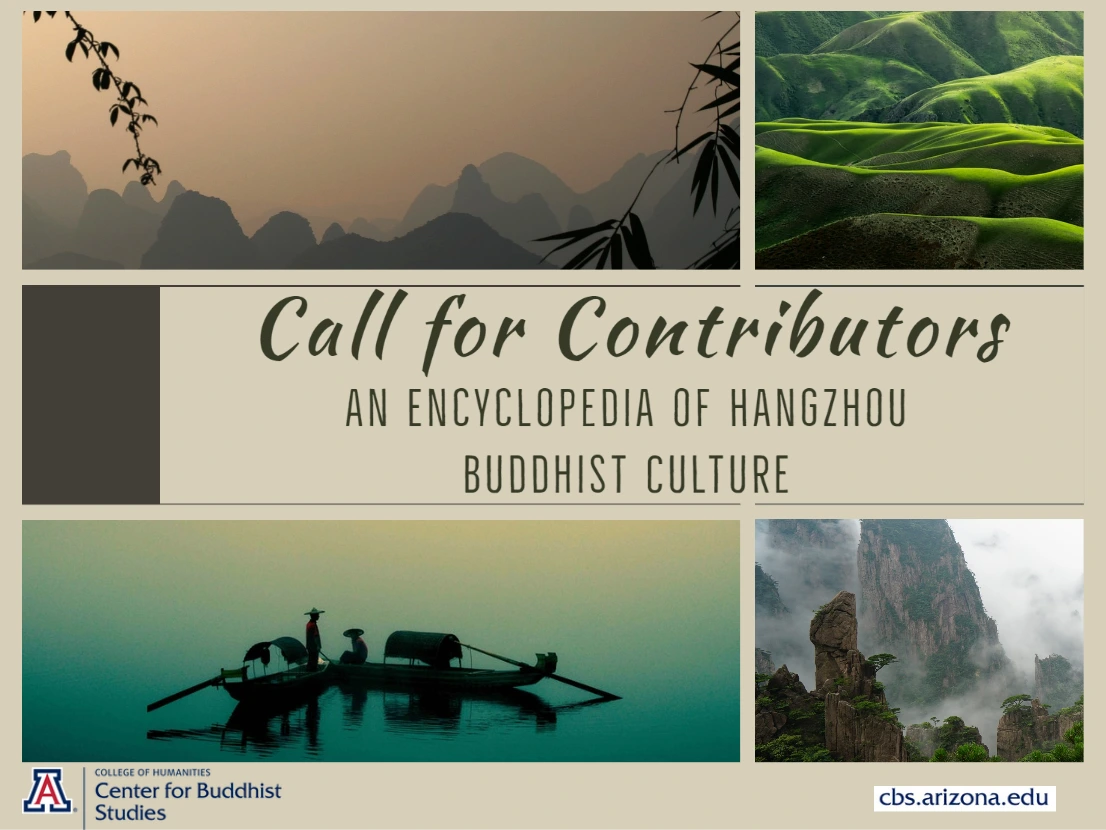
Call for Contributors
An Encyclopedia of Hangzhou Buddhist Culture
The “grand narrative” approach to the study of East Asian Buddhism has long remained dominant within the academic study of Buddhism. There is much to be gained from such a methodology and it has served the field well for the most part, but with increasing sophistication and evolving theoretical frameworks, the scholarly value of regional perspectives has become evident. The great cache of documents discovered at Dunhuang at the beginning of the 20th century served as the foundational event for the academic field of Dunhuang textual studies, something that has continued unabated for over a century. But there remain other areas in China that have played a crucial role in the overall history and transmission of Buddhism to the larger East Asian cultural sphere, and that require a deeper and more sustained investigation. Hangzhou, the former capital of China during the Song dynasty (960-1278), is one such area.
Hangzhou has long been a crucially important cultural and economic hub in China, but it came to particular prominence during the tenth century when it was known as Qiantang and served as the capital of the kingdom of Wuyue. During the Song dynasty, it became a base from which Buddhism spread throughout East Asia, particularly in the case of Chan (J. Zen; K. Sŏn) Buddhism. It was in Hangzhou that the government established the “Five Mountains and Ten Monasteries” system wushan shicha 五山十刹, which later was carried over to Japan and exerted a profound influence on the subsequent history of Japanese Zen. Chan Buddhism went on to become one of the dominant forms of Buddhism in East Asia and served as a cultural nexus for associated arts. Tea production, tea culture, and ceramics are just a few of the industries and art forms that have long been associated with Chan and Hangzhou, and they continue to be in the present day. Hangzhou’s cultural prominence in East Asia is inextricably linked to its Buddhist heritage, which has long expanded beyond the monastery walls and has come to subsume fine and performance arts, material culture, and intellectual history in the broadest sense.
The Encyclopedia of Hangzhou Buddhist Culture will be the first of its kind as a dedicated reference source for Hangzhou’s Buddhist heritage as well as its associated cultural legacies. As Buddhism in Hangzhou is broad-ranging and intimately networked, the Encyclopedia will include people, places, texts, industries, arts, concepts, and schools from pre-Tang China all the way through the Republican Period. In addition to Hangzhou Buddhism and its connections to Korea and Japan, some of the entries are related to Daoism, popular religions, local culture, and Christianity in Hangzhou. Not all of these figures and places are Buddhist per se—but they functioned in the continuum of cultural flows originating and nourished in Hangzhou’s Buddhist past.
The Encyclopedia, as part of the Hangzhou Buddhist Culture Project at the University of Arizona, will be co-edited by Ven. Guangquan, Dr. Albert Welter, Dr. Jiang Wu, managed by executive editor Dr. James Baskind through the Center for Buddhist Studies, and supervised by an advisory committee. It will be published in English by a reputable press in 2022. We are looking for scholars and advanced graduate students who are interested in Hangzhou Buddhism to write short entries for about 500 selected entries which are evenly distributed from the Tang through the Republican era. Contributors will receive an orientation, training, supervision, a certificate of contribution from the Center, and financial remuneration depending on the extent of their contributions. Contributors can choose the entries they want to write from our Google doc sign up link. Please send a short message to hangzhouculture@arizona.edu with a brief description of your qualifications or your CV. We will contact you and send the relevant documents that lay out the details of the project such as: the list of the entries via Google doc, the style sheet, and the contributors’ agreement. We plan to complete this project by Dec. 30, 2021.

